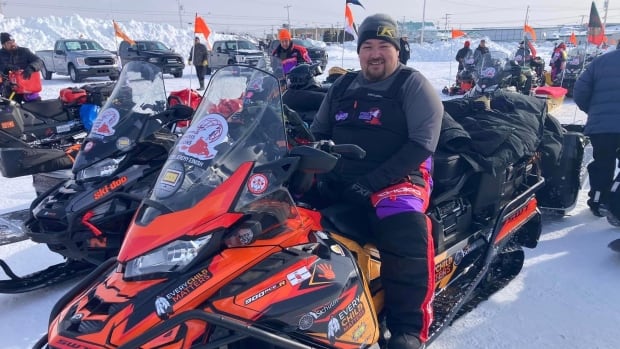Several communities in northern Quebec have rolled out the welcome mat, Cree Nation style, over the last few days to welcome a unique Indigenous-led snowmobile expedition with a special mission of reconciliation, healing and hope.
The First Nations Expedition left the Atikamekw community of Manawan after lighting a sacred fire about 250 kilometres north of Montreal on Feb. 16. They plan to travel more than 4,500 kilometres, stopping in 10 Indigenous communities across a good part of the province.
Organizers say it is the longest off-trail snowmobile expedition ever attempted and carries a message of reconciliation, education and a desire to reconnect different Indigenous nations across Quebec.
“These are accessible, welcoming communities, and that’s what we want to show to the general public, because in 2023 it’s not normal to hear people still say: ‘We’re afraid to go to the communities.’ There is a lot of education to be done,” said organizer Christian Flamand in an interview with Radio-Canada.
On Tuesday night around 10:30 p.m., the riders arrived to a hero’s welcome in Chisasibi, the largest of the Cree communities, located about 1,400 kilometres north of Montreal.
“The reception was incredible,” said Keith Bearskin, one of five Cree riders taking part. He is from Chisasibi.
“It was really something to see how many people were waiting for our arrival. Vehicles were honking and waving as we drove by.”
Several hundred people were on hand as the riders arrived in downtown Chisasibi, some lining the streets on foot, others in their cars. There was also a meal of caribou stew and bannock and a few welcoming remarks before the group headed to get some much needed rest.
The First Nations Expedition includes Cree, Anishinaabe, Atikamekw, Innu, Naskapi and Ojibway riders, as well as some non-Indigenous riders and journalists. There are ten women and 46 men travelling in four groups, according to Bearskin, plus a group of media.
A few days earlier, the group was welcomed in another Cree community of Waskaganish.
“The women [riders] were very happy how they were greeted,” said Stacy Bear in Cree. Bear is the manager of Waskaganish’s culture and tourism department.
“They were the ones who wanted to serve the dessert plates at the feast. The men mentioned they are very strong women,” said Bear.

The expedition also aims to pay tribute to three causes, reflected in the colours of snowmobile suits all the riders are wearing: red for missing and murdered Indigenous women and girls, orange for Indigenous children lost at residential schools and purple for Joyce Echaquan, an Atikamekw woman who died in the Joliette hospital in 2020. Echaquan’s widow, Carol Dubé, is one of the riders.
“We wear the colours of these causes so that people don’t forget them. We don’t do politics, we raise awareness. We want to get the message out on another level, towards healing,” said Flamand.
Residents in both Waskaganish and Chisasibi have raised thousands of dollars to help the family of Echaquan.

For Robbie Tapiatic, another of Cree riders, the expedition is helping Indigenous people reconnect.
“We are in [this expedition] together,” said Robbie Tapiatic in Cree. The next stage of the expedition will travel through his family’s trapline at the far eastern edge of Cree territory near Caniapiscau.
“This expedition is a good cause. We were all given life and we have knowledge about land where we can roam the territory. We are hoping it will be all good.”
The group is travelling off-trail through freezing temperatures hovering in the –30 C range and at times difficult snow conditions. Bearskin said the conditions on James Bay have been challenging for some riders who are not used to it.

“The conditions out on the bay surprised them and a lot of their gear and their boxes got broken,” said Bearskin.
The expedition will stay in Chisasibi for another night on Thursday, before heading inland toward Matimekush-Lac John and then the Naskapi community of Kawawachikamach.
The First Nations Expedition will then turn south to Fermont and Poste Montagnais, a Hydro-Quebec substation south of Fermont.
The expedition will end in Uashat Mak Mani-utenam on Quebec’s Lower North Shore somewhere between March 2 and 4.
Organizers say they need to have a flexible end date to account for weather conditions and anything unexpected.
The First Nations Expedition was delayed last year because of the COVID-19 pandemic.


